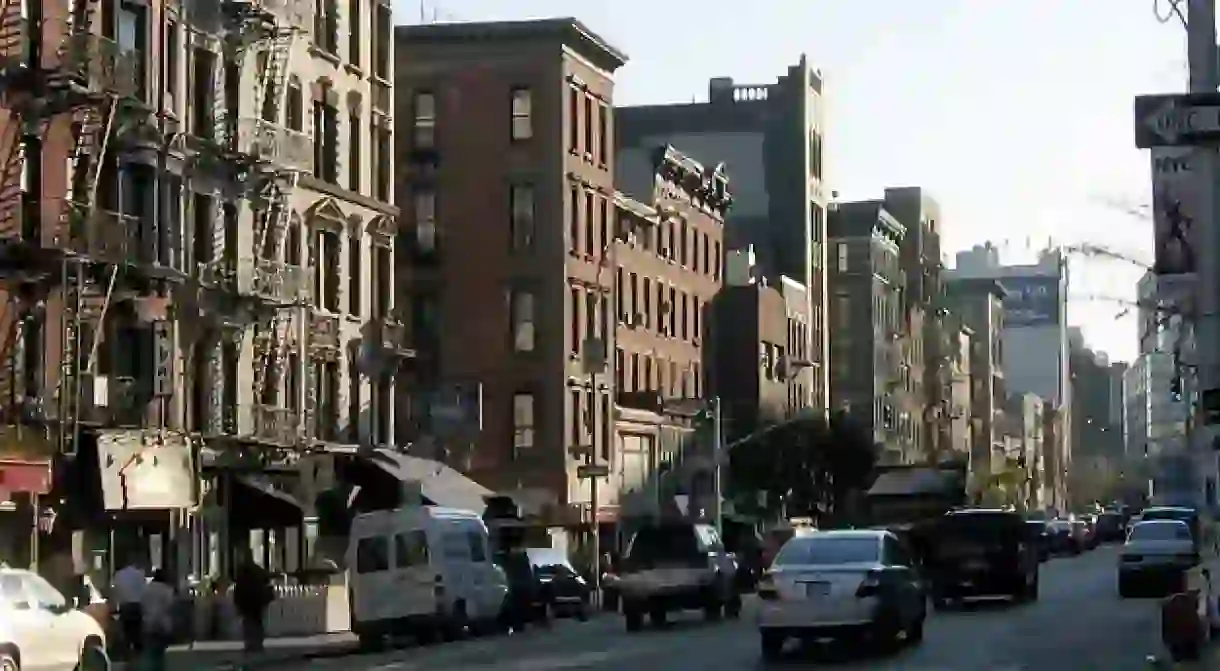Manhattan Neighborhood In Focus: East Village

Manhattan’s East Village is a neighborhood that’s gone through many phases. It was first part of the Lower East Side and was home to many Polish, Russian, and Ukrainian residents. Then in the 1960s, it became an artist’s neighborhood – known for its alternative culture and being the birthplace of punk rock, among many other anti-establishment movements. Now, like many other neighborhoods, it’s been gentrified, but it’s still known for its eclectic inhabitants, nightlife, and gritty feel.
The East Village’s Polish, Russian, and Ukrainian history dates back to the 1890s. After World War II, more immigrants moved to the area, and even now, the area is sometimes nicknamed ‘the borscht belt.’ To this day, the East Village is the place in Manhattan for Eastern European food. Perhaps the most popular spot to get it is Veselka – a Ukrainian restaurant that’s open 24 hours a day and has been in operation since 1954.
http://instagram.com/p/BIKiNuqBYk1/?taken-by=veselkanyc
You can also see the signs of Eastern European history in the Russian and Turkish Baths – a perfect place to spend a cold or rainy day.
The 1960s saw the East Village shift, becoming a neighborhood of artists. Before this time, it was still technically part of the Lower East Side, but with the rise of the artists came a desire for the neighborhood to become its own separate entity with its own name. By 1966, the neighborhood was known as the East Village.
http://instagram.com/p/BJdUlA9DK1N/?taken-at=243068390
The music and art scenes exploded during this time. The East Village is often considered the birthplace of punk rock music, and everyone from The Ramones to Madonna to The Strokes has played there. The neighborhood is also the setting for the musical Rent, which illustrates the AIDS epidemic of the 1990s and follows the characters’ dreams to make it as artists.
The neighborhood has changed with gentrification over the years, but it’s still vibrant and very much alive. Now, you can spend days getting lost in the neighborhood’s vintage shops, or shop in the higher-end boutiques. It’s also full of bars, restaurants, and cafés. David Chang’s Momofuku empire is centered here. You can grab ramen at the Noodle Bar, a chicken sandwich at Fuku, or a higher-end meal at the SSam Bar, or Momofuku Ko.
http://instagram.com/p/BDikJMpjYcr/?taken-at=746
Other favorite spots include Cafe Mogador (excellent Middle Eastern and Mediterranean food that’s great for brunch, lunch, or dinner), Taverna Kyclades (authentic Greek food), or Frank (casual Italian food). The best coffee in the neighborhood is at Abraco Espresso & Bakery, and for bars, there’s the infamous speakeasy Please Don’t Tell (you go through a hot dog shop and a red telephone booth to find it), the casual East Village Social, or the amazing underground sake bar Sake Decibel. The East Village has the highest concentration of bars of any neighborhood in the city, so there’s undoubtedly something for everyone.
http://instagram.com/p/-x0sninEEu/?taken-at=63574
Though the East Village has changed, its proximity to New York University and The New School help it maintain its diversity – both in ethnicity and income. Though it’s safer and calmer than it once was, it’s still a neighborhood of young people and partying. Places like St Marks Place – a street that’s world famous for being louder and more rebellious than anywhere else – still maintain the rebellious and grungy feel that the East Village is known for, and perhaps always will be.













